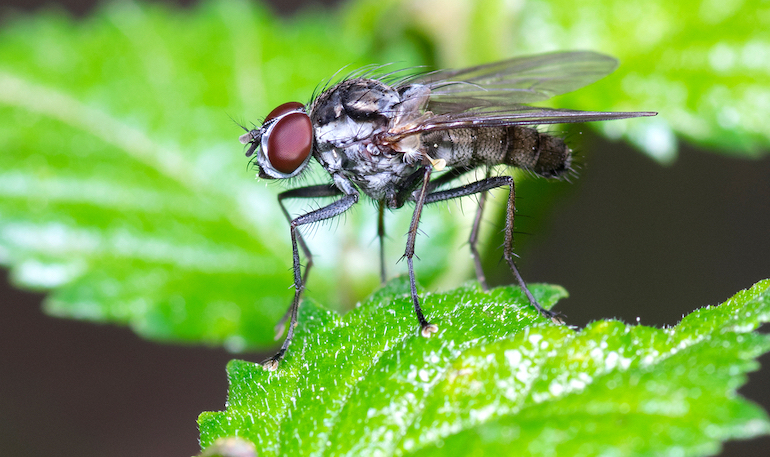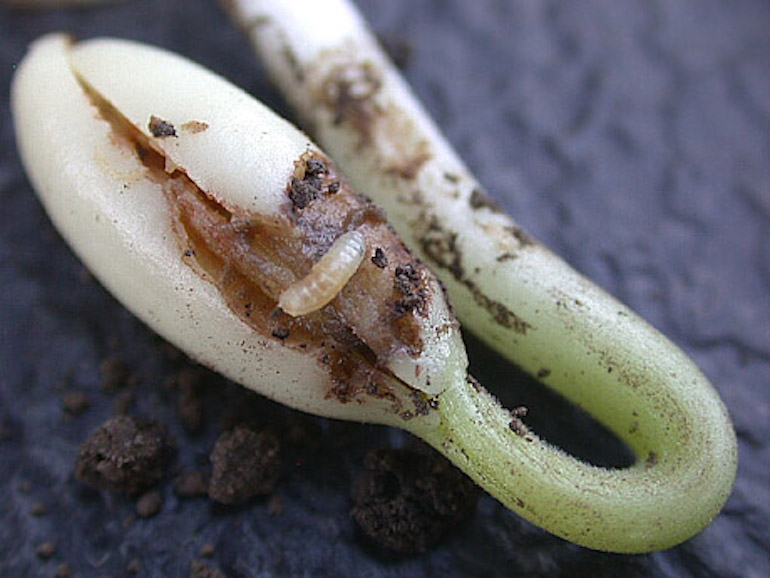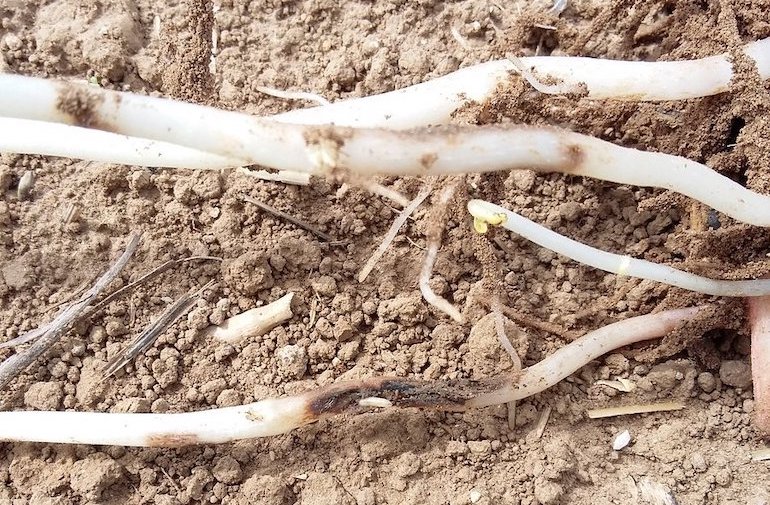Garden pests - Bean seed fly

Protect your runners or French varieties against bean seed flies
Image: A.S. Floro
If you're growing beans in your plot this year, watch out for bean seed fly. The maggots of these flies can damage - or even kill - your bean seedlings.
What are bean seed flies?

Clear signs of damage can be seen from bean seed fly larvae
Image: Eric Burkness, Department of Entomology, University of Minnesota
Bean seed fly (Delia platura) look like small house flies (6mm long). It's their white, headless and legless larvae, however, that do all the damage.
Adults become active in the late spring, laying eggs in the soil. When their eggs hatch, the maggots (reaching up to 8mm in length) feed on bean seeds and roots - and cause severe damage to seedlings.
There can be up to five generations of bean seed fly during a year, but the first generation often does the most damage. That's because beans sown in colder, wetter soils, take longer to germinate - giving the maggots more time to do harm.
How to recognise bean seed fly damage

Plants affected by bean seed fly will be weak and lack vigour
Image: Potato Agronomy on Twitter
Here's how to work out if bean seed fly are harming your crops:
- French and runner bean seedlings are killed.
- Shoots grow blind (with no growing point) and distorted.
Your bean seed fly questions

Bean seed flies can be controlled with specific gardening methods
Image: Sergey
What plants do bean seed fly eat?
Bean seed fly maggots feed on the seeds and roots of beans - especially French and runner beans. They sometimes also feed on brassicas, gourds, lettuce, onions and sunflowers.
How can I control bean seed fly?
There are several effective ways to control bean seed fly in your garden:
- Dig in compost in the autumn - Adult flies are attracted to fresh compost, so dig in any organic matter in the autumn when there's no risk of maggots.
- Encourage rapid germination - Take care to prepare your soil well and promote rapid germination, since the maggots only feed on seeds and young seedlings.
- Start seed in trays or pots - Protect beans at their most vulnerable stage by germinating them out of the ground and transplanting the once the seedlings are established.
- Introduce nematodes - You can protect garden-sown beans with pathogenic nematodes that will attack the maggots.
- Protect seeds and seedlings - Lay horticultural fleece or insect-barrier netting to prevent these flies from laying their eggs in the soil.
For more information on growing your own pea and bean plants, head to our pea and bean hub page.







